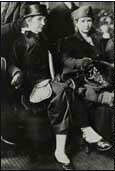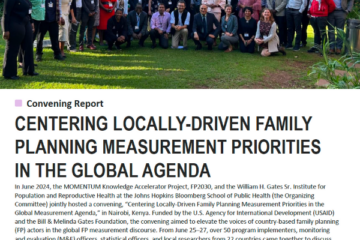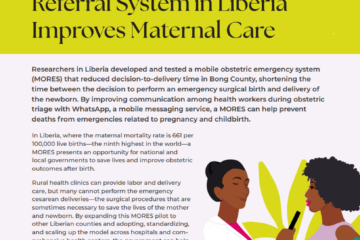
Margaret Sanger, Birth Control Pioneer
 Margaret Sanger (1879–1966) in a Brooklyn courtroom with her sister Ethel Byrne (right) in 1917. Source: Planned Parenthood Federation of America, Inc.
Margaret Sanger (1879–1966) in a Brooklyn courtroom with her sister Ethel Byrne (right) in 1917. Source: Planned Parenthood Federation of America, Inc.
(April 2000) The core agenda of international population policy has recently broadened beyond targeted demographic objectives to the relationship between women’s status and reproductive outcomes. This historic shift returns the conversation to where it began at the turn of the 20th century, when Margaret Sanger first identified women’s sexual and reproductive health and rights as a cause for social concern.
Sanger emerged on the American public scene before World War I, when it was fashionable to believe in the inevitability of human progress. She became politically active on behalf of the radical labor movement and was called to her life’s mission by the tragedies of unwanted pregnancy and illegal abortion that she witnessed as a midwife among the immigrant poor in New York.
In 1917, Sanger went to jail for distributing an early version of the diaphragm from a makeshift clinic in a tenement storefront in Brooklyn. Her conviction, when appealed, won an interpretation of New York law that allowed doctors — though not nurses, as she intended — to prescribe contraception for medical purposes. Under those constraints, she built the modern family planning movement.
With the victory for women’s suffrage finally achieved in 1920, she found new supporters among its adherents, many of them women from the middle and upper classes. Birth control, she argued, would liberate women in the bedroom, the home, and the larger community.
Through the 1920s and 1930s, Sanger took her thriving social movement abroad. In 1927, she sponsored the first world population conference in Geneva, which gave rise to the International Union for the Scientific Investiga-tion of Population Problems (renamed in 1947 as the International Union for the Scientific Study of Population).
Meanwhile, Sanger’s clinic in New York provided contraception and preventive gynecology, along with pioneering services in sex education, marriage counseling, and infertility counseling. The clinic even quietly made referrals for safe, illegal abortions. It was, in many ways, a model for the comprehensive and integrated approach to service delivery that is today’s reform mantra.
Yet the birth control movement stalled during the long years of the Depression and World War II, and in the decidedly pronatalist decades that followed in this country. The movement was stymied by the cost and complexity of trying to reach women most in need without any public funding. It was engulfed by internal dissension and overwhelmed by a barrage of opposition.
The always-fragile alliance Sanger tried to forge with the country’s social, professional, and business establishment became a distinct liability. She resigned from the American Birth Control League because of the conservative, eugenic leanings of some of its leaders, who boldly advanced contraception as a means of slowing birth rates among the poor during the Depression. Yet Sanger also found no ally in her close friend Franklin Roosevelt for her democratic family planning message. Roosevelt was forced to capitulate to the furious opposition raised by the New Deal’s coalition of northern urban Catholics and southern rural populists.
Embittered by birth control’s failure to secure a place in America’s social welfare and public health systems, Sanger turned her full attention abroad and founded the International Planned Parenthood Federation in London in 1948. For two more decades, until her death at the age of 87 in 1966, she struggled valiantly to build family planning associations in the de-veloping world and to promote programs that would not lose sight of her concern for the precarious status of women.
Ellen Chesler is a senior fellow with the Open Society Institute in New York City, where she directs the foundation’s reproductive health and rights program. She is the author of Woman of Valor: Margaret Sanger and the Birth Control Movement in America (New York: Simon & Schuster, 1992).
Articles in This Series
- Alfred Lotka, Mathematical Demographer
- Margaret Sanger, Birth Control Pioneer
- Alan F. Guttmacher, People’s Physician
- Gregory Pincus, Father of the Pill
- John D. Rockefeller 3rd, Statesman and Founder of the Population Council
- Reimert T. Ravenholt, USAID’s Population Program Stalwart
- Nafis Sadik, Architect of ICPD






